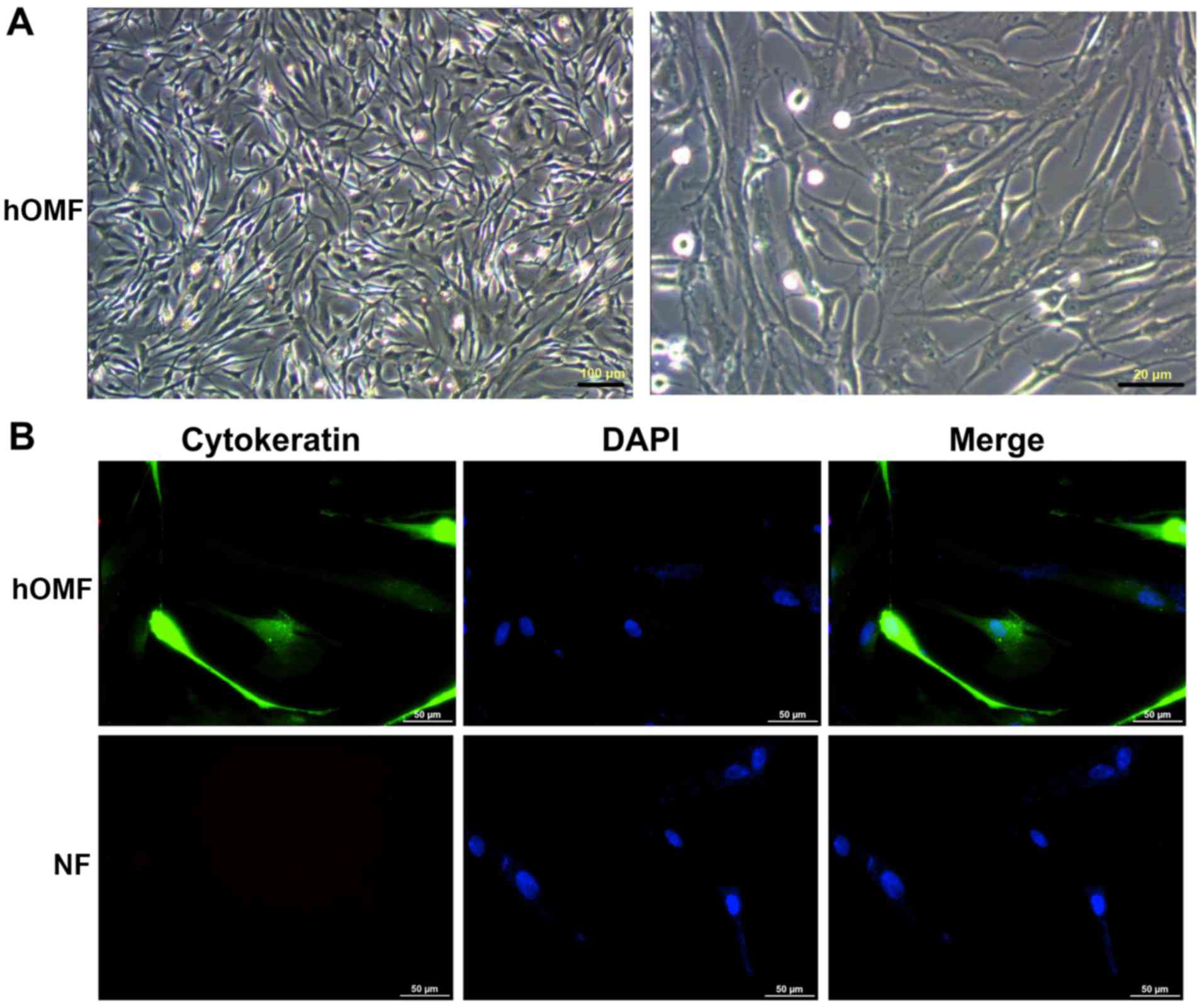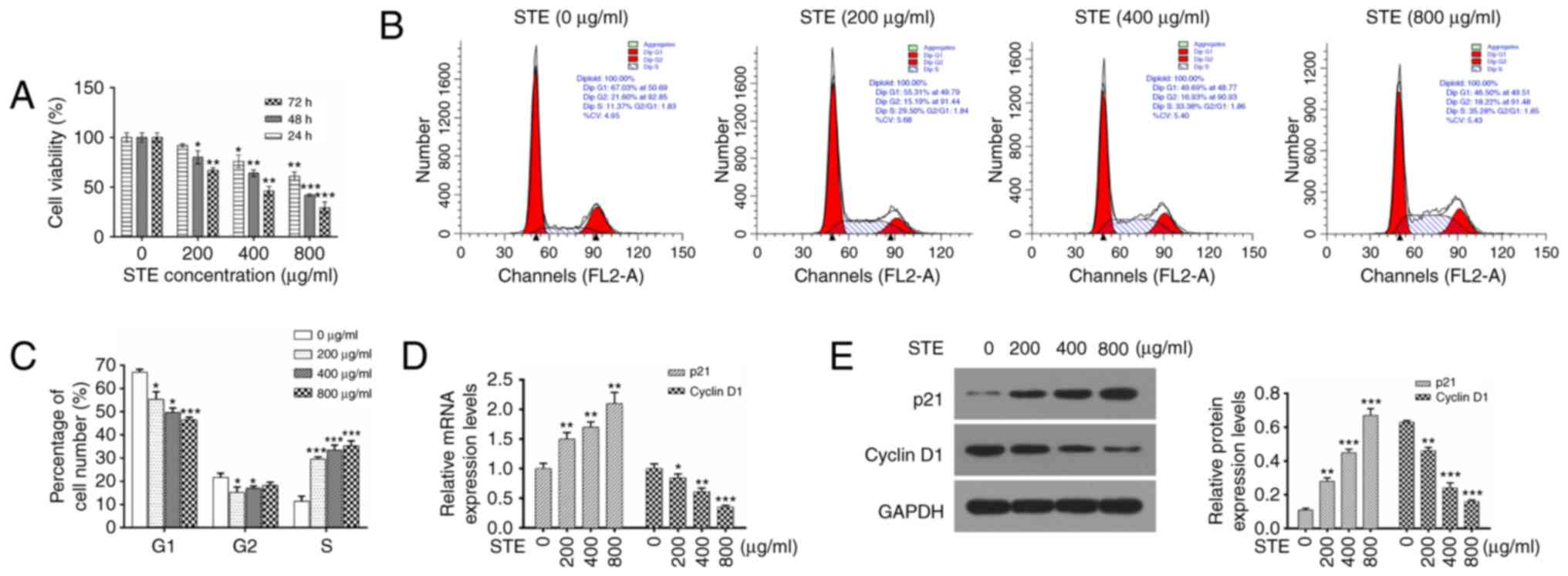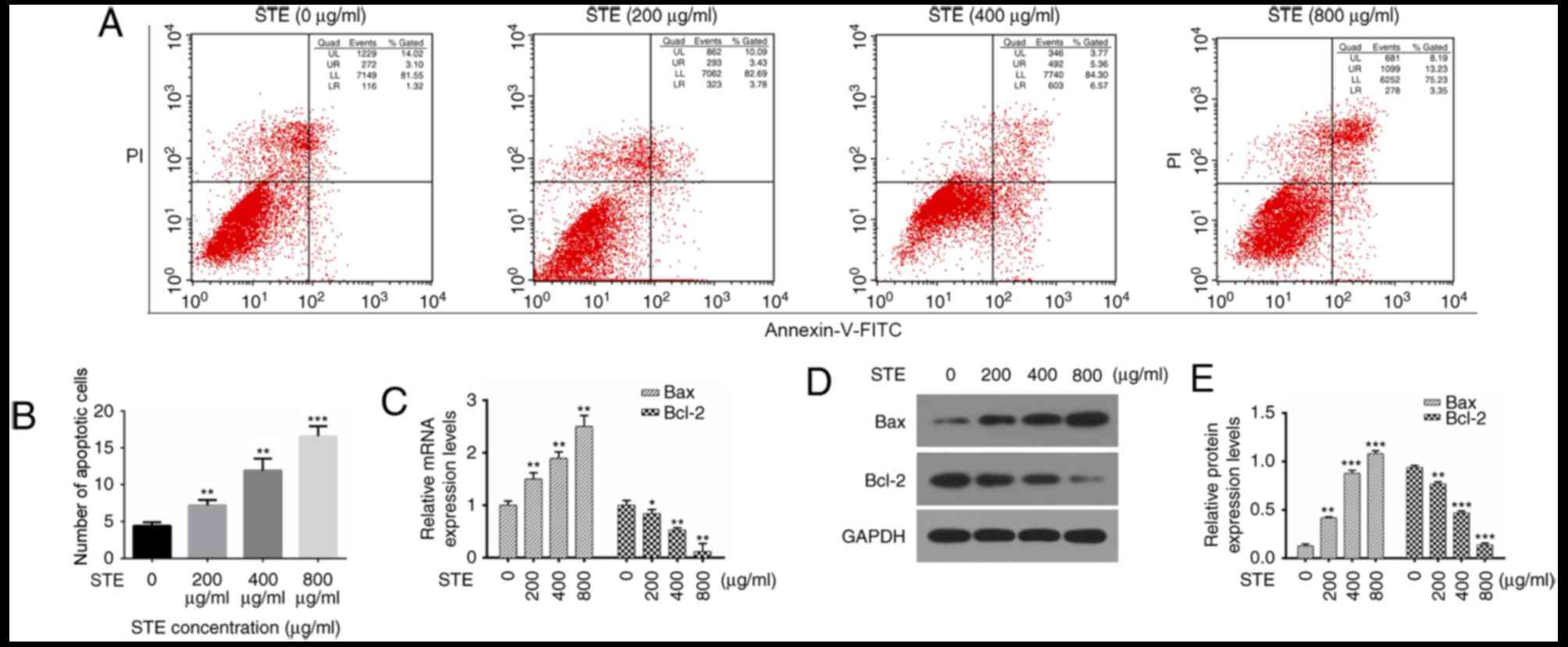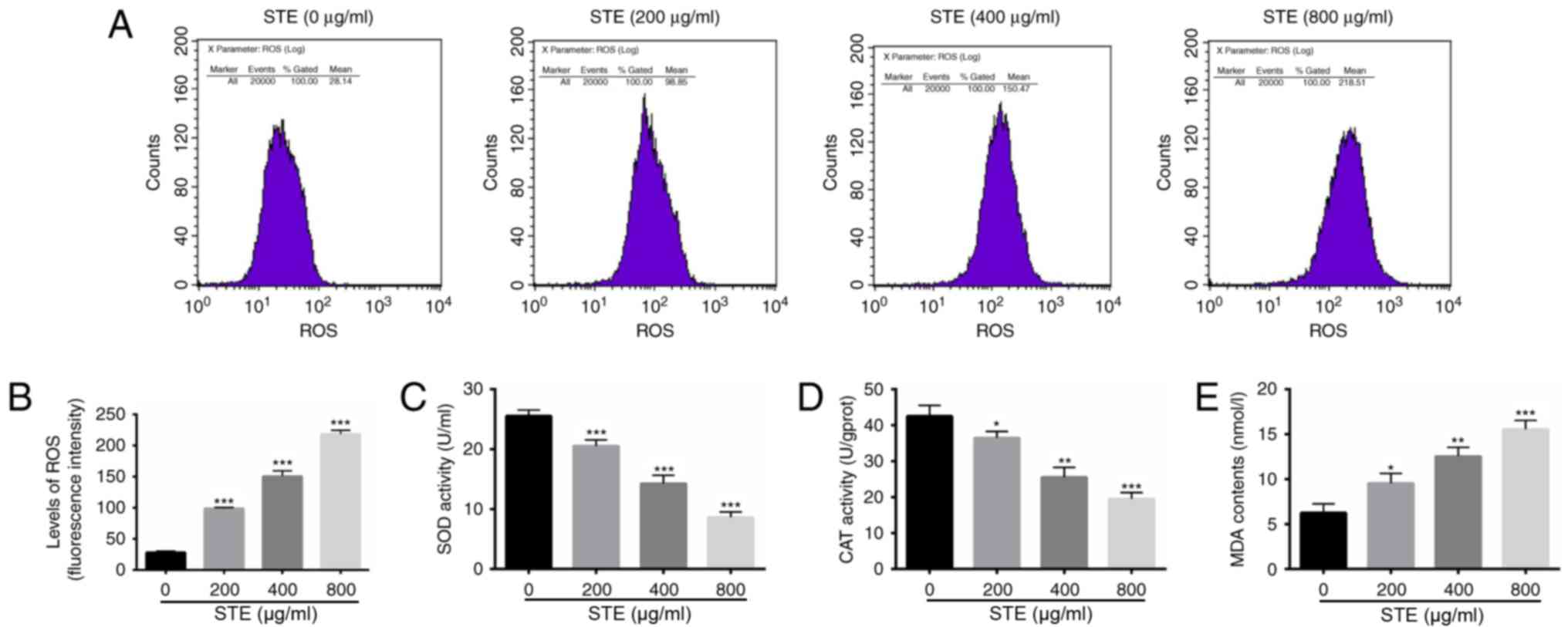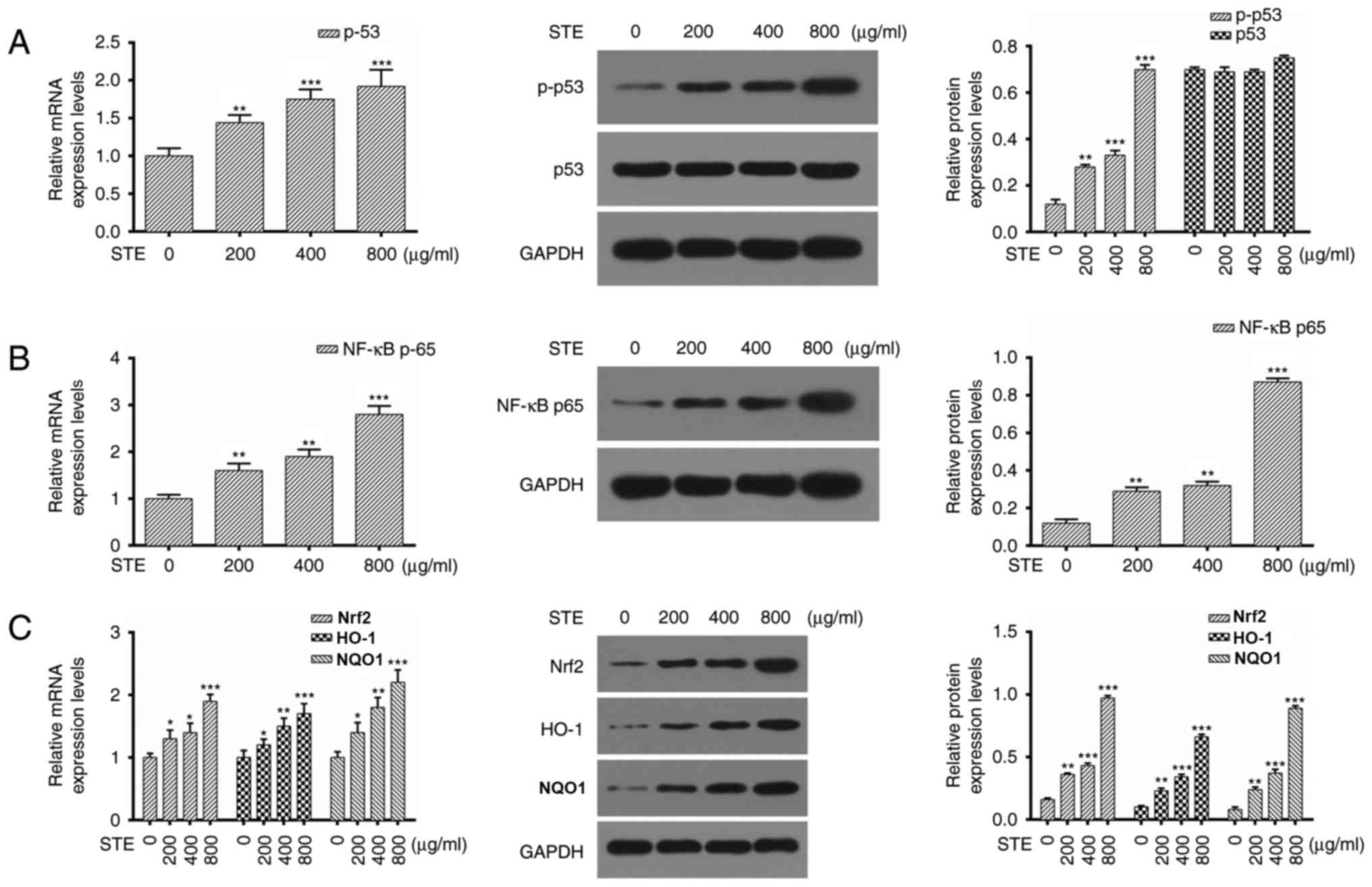|
1
|
Boffetta P, Hecht S, Gray N, Gupta P and
Straif K: Smokeless tobacco and cancer. Lancet Oncol. 9:667–675.
2008. View Article : Google Scholar : PubMed/NCBI
|
|
2
|
Chagué F, Guenancia C, Gudjoncik A, Moreau
D, Cottin Y and Zeller M: Smokeless tobacco, sport and the heart.
Arch Cardiovasc Dis. 108:75–83. 2015. View Article : Google Scholar : PubMed/NCBI
|
|
3
|
England LJ, Kim SY, Tomar SL, Ray CS,
Gupta PC, Eissenberg T, Cnattingius S, Bernert JT, Tita AT, Winn
DM, et al: Non-cigarette tobacco use among women and adverse
pregnancy outcomes. Acta Obstet Gynecol Scand. 89:454–464. 2010.
View Article : Google Scholar : PubMed/NCBI
|
|
4
|
Bates C, Fagerström K, Jarvis MJ, Kunze M,
McNeill A and Ramström L: European Union policy on smokeless
tobacco: A statement in favour of evidence based regulation for
public health. Tob Control. 12:360–367. 2003. View Article : Google Scholar : PubMed/NCBI
|
|
5
|
McAdam K, Kimpton H, Vas C, Rushforth D,
Porter A and Rodu B: The acrylamide content of smokeless tobacco
products. Chem Cent J. 9:562015. View Article : Google Scholar : PubMed/NCBI
|
|
6
|
Janbaz KH, Qadir MI, Basser HT, Bokhari TH
and Ahmad B: Risk for oral cancer from smokeless tobacco. Contemp
Oncol (Pozn). 18:160–164. 2014.PubMed/NCBI
|
|
7
|
Lee CH, Lee JM, Wu DC, Hsu HK, Kao EL,
Huang HL, Wang TN, Huang MC and Wu MT: Independent and combined
effects of alcohol intake, tobacco smoking and betel quid chewing
on the risk of esophageal cancer in Taiwan. Int J Cancer.
113:475–482. 2005. View Article : Google Scholar : PubMed/NCBI
|
|
8
|
Znaor A, Brennan P, Gajalakshmi V, Mathew
A, Shanta V, Varghese C and Boffetta P: Independent and combined
effects of tobacco smoking, chewing and alcohol drinking on the
risk of oral, pharyngeal and esophageal cancers in Indian men. Int
J Cancer. 105:681–686. 2003. View Article : Google Scholar : PubMed/NCBI
|
|
9
|
Brinton LA, Blot WJ, Becker JA, Winn DM,
Browder JP, Farmer JC Jr and Fraumeni JF Jr: A case-control study
of cancers of the nasal cavity and paranasal sinuses. Am J
Epidemiol. 119:896–906. 1984. View Article : Google Scholar : PubMed/NCBI
|
|
10
|
Johansson SL, Hirsch JM, Larsson PA, Saidi
J and Osterdahl BG: Snuff-induced carcinogenesis: Effect of snuff
in rats initiated with 4-nitroquinoline N-oxide. Cancer Res.
49:3063–3069. 1989.PubMed/NCBI
|
|
11
|
Lam E, Kelley E, Martin S and Buettner G:
Tobacco xenobiotics release nitric oxide. Tob Induc Dis. 1:207–211.
2003. View Article : Google Scholar : PubMed/NCBI
|
|
12
|
Stich HF, Parida BB and Brunnemann KD:
Localized formation of micronuclei in the oral mucosa and
tobacco-specific nitrosamines in the saliva of ‘reverse’ smokers,
Khaini-tobacco chewers and gudakhu users. Int J Cancer. 50:172–176.
1992. View Article : Google Scholar : PubMed/NCBI
|
|
13
|
Hecht SS, Rivenson A, Braley J, DiBello J,
Adams JD and Hoffmann D: Induction of oral cavity tumors in F344
rats by tobacco-specific nitrosamines and snuff. Cancer Res.
46:4162–4166. 1986.PubMed/NCBI
|
|
14
|
Rivenson A, Hoffmann D, Prokopczyk B, Amin
S and Hecht SS: Induction of lung and exocrine pancreas tumors in
F344 rats by tobacco-specific and Areca-derived N-nitrosamines.
Cancer Res. 48:6912–6917. 1988.PubMed/NCBI
|
|
15
|
Hecht SS: Biochemistry, biology, and
carcinogenicity of tobacco-specific N-nitrosamines. Chem Res
Toxicol. 11:559–603. 1998. View Article : Google Scholar : PubMed/NCBI
|
|
16
|
Patel BP, Rawal UM, Shah PM, Prajapati JA,
Rawal RM, Dave TK and Patel PS: Study of tobacco habits and
alterations in enzymatic antioxidant system in oral cancer.
Oncology. 68:511–519. 2005. View Article : Google Scholar : PubMed/NCBI
|
|
17
|
Naga Sirisha CV and Manohar RM: Study of
antioxidant enzymes superoxide dismutase and glutathione peroxidase
levels in tobacco chewers and smokers: A pilot study. J Cancer Res
Ther. 9:210–214. 2013. View Article : Google Scholar : PubMed/NCBI
|
|
18
|
Sugiura T, Dohi Y, Takase H, Yamashita S,
Fujii S and Ohte N: Oxidative stress is closely associated with
increased arterial stiffness, especially in aged male smokers
without previous cardiovascular events: A cross-sectional study. J
Atheroscler Thromb. 24:1186–1198. 2017. View Article : Google Scholar : PubMed/NCBI
|
|
19
|
Ermis B, Ors R, Yildirim A, Tastekin A,
Kardas F and Akcay F: Influence of smoking on maternal and neonatal
serum malondialdehyde, superoxide dismutase, and glutathione
peroxidase levels. Ann Clin Lab Sci. 34:405–409. 2004.PubMed/NCBI
|
|
20
|
Block G, Dietrich M, Norkus EP, Morrow JD,
Hudes M, Caan B and Packer L: Factors associated with oxidative
stress in human populations. Am J Epidemiol. 156:274–285. 2002.
View Article : Google Scholar : PubMed/NCBI
|
|
21
|
Harris AC, Tally L, Schmidt CE, Muelken P,
Stepanov I, Saha S, Vogel RI and LeSage MG: Animal models to assess
the abuse liability of tobacco products: Effects of smokeless
tobacco extracts on intracranial self-stimulation. Drug Alcohol
Depend. 147:60–67. 2015. View Article : Google Scholar : PubMed/NCBI
|
|
22
|
Yu C, Zhang Z, Liu Y, Zong Y, Chen Y, Du
X, Chen J, Feng S, Hu J, Cui S and Lu G: Toxicity of smokeless
tobacco extract after 184-day repeated oral administration in rats.
Int J Environ Res Public Health. 13(pii): E2812016. View Article : Google Scholar : PubMed/NCBI
|
|
23
|
Avti PK, Vaiphei K, Pathak CM and Khanduja
KL: Involvement of various molecular events in cellular injury
induced by smokeless tobacco. Chem Res Toxicol. 23:1163–1174. 2010.
View Article : Google Scholar : PubMed/NCBI
|
|
24
|
Avti PK, Kumar S, Pathak CM, Vaiphei K and
Khanduja KL: Smokeless tobacco impairs the antioxidant defense in
liver, lung, and kidney of rats. Toxicol Sci. 89:547–553. 2006.
View Article : Google Scholar : PubMed/NCBI
|
|
25
|
Livak KJ and Schmittgen TD: Analysis of
relative gene expression data using real-time quantitative PCR and
the 2(-Delta Delta C(T)) method. Methods. 25:402–408. 2001.
View Article : Google Scholar : PubMed/NCBI
|
|
26
|
Li CJ: Flow cytometry analysis of cell
cycle and specific cell synchronization with butyrate. Methods Mol
Biol. 1524:149–159. 2017. View Article : Google Scholar : PubMed/NCBI
|
|
27
|
Filby A, Day W, Purewal S and
Martinez-Martin N: The analysis of cell cycle, proliferation, and
asymmetric cell division by imaging flow cytometry. Methods Mol
Biol. 1389:71–95. 2016. View Article : Google Scholar : PubMed/NCBI
|
|
28
|
Zhang W and Liang Z: Comparison between
annexin V-FITC/PI and Hoechst33342/PI double stainings in the
detection of apoptosis by flow cytometry. Xi Bao Yu Fen Zi Mian Yi
Xue Za Zhi. 30:1209–1212. 2014.(In Chinese). PubMed/NCBI
|
|
29
|
Shen Y, Guo W, Wang Z, Zhang Y, Zhong L
and Zhu Y: Protective effects of hydrogen sulfide in hypoxic human
umbilical vein endothelial cells: A possible mitochondria-dependent
pathway. Int J Mol Sci. 14:13093–13108. 2013. View Article : Google Scholar : PubMed/NCBI
|
|
30
|
McCord JM and Fridovich I: Superoxide
dismutase. An enzymic function for erythrocuprein (hemocuprein). J
Biol Chem. 244:6049–6055. 1969.PubMed/NCBI
|
|
31
|
Archbald RM: Enzymatic methods in amino
acid analysis. Ann N Y Acad Sci. 47:181–186. 1946. View Article : Google Scholar : PubMed/NCBI
|
|
32
|
Cheng C, Yi J, Wang R, Cheng L, Wang Z and
Lu W: Protection of Spleen Tissue of γ-ray irradiated mice against
immunosuppressive and oxidative effects of radiation by adenosine
5′-monophosphate. Int J Mol Sci. 19(pii): E12732018. View Article : Google Scholar : PubMed/NCBI
|
|
33
|
Simon HU, Haj-Yehia A and Levi-Schaffer F:
Role of reactive oxygen species (ROS) in apoptosis induction.
Apoptosis. 5:415–418. 2000. View Article : Google Scholar : PubMed/NCBI
|
|
34
|
Yee C, Yang W and Hekimi S: The intrinsic
apoptosis pathway mediates the pro-longevity response to
mitochondrial ROS in C. elegans. Cell. 157:897–909. 2014.
View Article : Google Scholar : PubMed/NCBI
|
|
35
|
Napierala M and Florek E: Historical
trends in prevalence of tobacco smoking among women. Przegl Lek.
72:155–157. 2015.(In Polish). PubMed/NCBI
|
|
36
|
Weintraub JM and Hamilton WL: Trends in
prevalence of current smoking, Massachusetts and states without
tobacco control programmes, 1990 to 1999. Tob Control. 11 Suppl
2:ii8–ii13. 2002.PubMed/NCBI
|
|
37
|
Corrigall WA: Nicotine self-administration
in animals as a dependence model. Nicotine Tob Res. 1:11–20. 1999.
View Article : Google Scholar : PubMed/NCBI
|
|
38
|
Rose JE and Corrigall WA: Nicotine
self-administration in animals and humans: Similarities and
differences. Psychopharmacology (Berl). 130:28–40. 1997. View Article : Google Scholar : PubMed/NCBI
|
|
39
|
Schick SF, Farraro KF, Perrino C, Sleiman
M, van de Vossenberg G, Trinh MP, Hammond SK, Jenkins BM and Balmes
J: Thirdhand cigarette smoke in an experimental chamber: Evidence
of surface deposition of nicotine, nitrosamines and polycyclic
aromatic hydrocarbons and de novo formation of NNK. Tob Control.
23:152–159. 2014. View Article : Google Scholar : PubMed/NCBI
|
|
40
|
Furukawa S, Ueno M and Kawaguchi Y:
Influence of tobacco on dental and oral diseases. Nihon Rinsho.
71:459–463. 2013.(In Japanese). PubMed/NCBI
|
|
41
|
Didilescu A: Tobacco induced oral
diseases. Pneumologia. 49:300–303. 2000.(In Romanian). PubMed/NCBI
|
|
42
|
Critchley JA and Unal B: Health effects
associated with smokeless tobacco: A systematic review. Thorax.
58:435–443. 2003. View Article : Google Scholar : PubMed/NCBI
|
|
43
|
Gartel AL, Serfas MS and Tyner AL:
p21-negative regulator of the cell cycle. Proc Soc Exp Biol Med.
213:138–149. 1996. View Article : Google Scholar : PubMed/NCBI
|
|
44
|
Huang KJ, Kuo CH, Chen SH, Lin CY and Lee
YR: Honokiol inhibits in vitro and in vivo growth of oral squamous
cell carcinoma through induction of apoptosis, cell cycle arrest
and autophagy. J Cell Mol Med. 22:1894–1908. 2018. View Article : Google Scholar : PubMed/NCBI
|
|
45
|
Mishra R and Das BR: Activation of STAT
5-cyclin D1 pathway in chewing tobacco mediated oral squamous cell
carcinoma. Mol Biol Rep. 32:159–166. 2005. View Article : Google Scholar : PubMed/NCBI
|
|
46
|
Mishra R and Das BR: Cyclin D1 expression
and its possible regulation in chewing tobacco mediated oral
squamous cell carcinoma progression. Arch Oral Biol. 54:917–923.
2009. View Article : Google Scholar : PubMed/NCBI
|
|
47
|
Rohatgi N, Kaur J, Srivastava A and Ralhan
R: Smokeless tobacco (khaini) extracts modulate gene expression in
epithelial cell culture from an oral hyperplasia. Oral Oncol.
41:806–820. 2005. View Article : Google Scholar : PubMed/NCBI
|
|
48
|
Sawhney M, Rohatgi N, Kaur J, Shishodia S,
Sethi G, Gupta SD, Deo SV, Shukla NK, Aggarwal BB and Ralhan R:
Expression of NF-kappaB parallels COX-2 expression in oral
precancer and cancer: Association with smokeless tobacco. Int J
Cancer. 120:2545–2556. 2007. View Article : Google Scholar : PubMed/NCBI
|
|
49
|
Jiang P and Yue Y: Human papillomavirus
oncoproteins and apoptosis (Review). Exp Ther Med. 7:3–7. 2014.
View Article : Google Scholar : PubMed/NCBI
|
|
50
|
Ni Nyoman AD and Lüder CG: Apoptosis-like
cell death pathways in the unicellular parasite Toxoplasma gondii
following treatment with apoptosis inducers and chemotherapeutic
agents: A proof-of-concept study. Apoptosis. 18:664–680. 2013.
View Article : Google Scholar : PubMed/NCBI
|
|
51
|
Bagchi M, Balmoori J, Bagchi D, Ray SD,
Kuszynski C and Stohs SJ: Smokeless tobacco, oxidative stress,
apoptosis, and antioxidants in human oral keratinocytes. Free Radic
Biol Med. 26:992–1000. 1999. View Article : Google Scholar : PubMed/NCBI
|
|
52
|
Jenson HB, Baillargeon J, Heard P and
Moyer MP: Effects of smokeless tobacco and tumor promoters on cell
population growth and apoptosis of B lymphocytes infected with
epstein-barr virus types 1 and 2. Toxicol Appl Pharmacol.
160:171–182. 1999. View Article : Google Scholar : PubMed/NCBI
|
|
53
|
Mangipudy RS and Vishwanatha JK: Role of
nitric oxide in the induction of apoptosis by smokeless tobacco
extract. Mol Cell Biochem. 200:51–57. 1999. View Article : Google Scholar : PubMed/NCBI
|
|
54
|
Banerjee AG, Gopalakrishnan VK and
Vishwanatha JK: Inhibition of nitric oxide-induced apoptosis by
nicotine in oral epithelial cells. Mol Cell Biochem. 305:113–121.
2007. View Article : Google Scholar : PubMed/NCBI
|
|
55
|
Kuwana T and Newmeyer DD: Bcl-2-family
proteins and the role of mitochondria in apoptosis. Curr Opin Cell
Biol. 15:691–699. 2003. View Article : Google Scholar : PubMed/NCBI
|
|
56
|
Breckenridge DG and Xue D: Regulation of
mitochondrial membrane permeabilization by BCL-2 family proteins
and caspases. Curr Opin Cell Biol. 16:647–652. 2004. View Article : Google Scholar : PubMed/NCBI
|
|
57
|
Panday A, Inda ME, Bagam P, Sahoo MK,
Osorio D and Batra S: Transcription factor NF-κB: An update on
intervention strategies. Arch Immunol Ther Exp (Warsz). 64:463–483.
2016. View Article : Google Scholar : PubMed/NCBI
|
|
58
|
Jaiswal AK: Nrf2 signaling in coordinated
activation of antioxidant gene expression. Free Radic Biol Med.
36:1199–1207. 2004. View Article : Google Scholar : PubMed/NCBI
|















